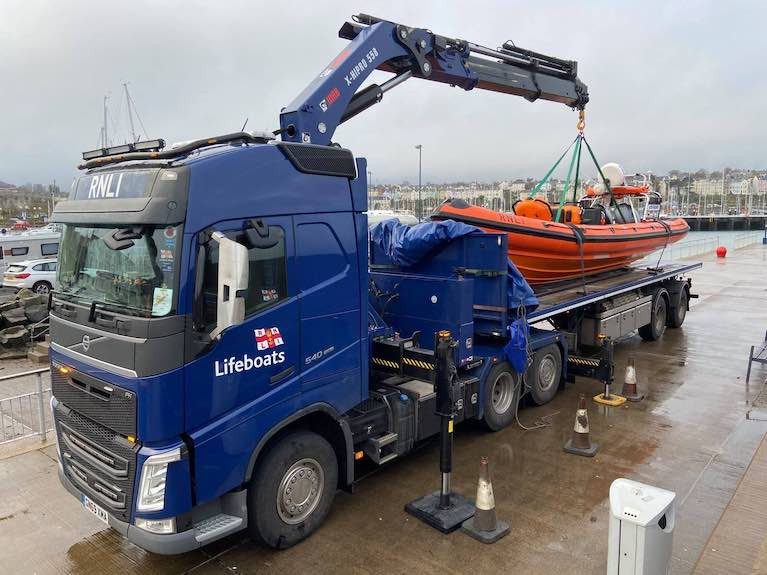Last Tuesday saw the return of the Bangor RNLI's Atlantic 85 Jessie Hillyard from her refit on the Isle of Wight, where she has been since February. Her replacement, 'Vivacious Atlantic' served the station well in the interim but the crew are delighted to have Jessie back. This lifeboat was funded by a generous gift from Eileen Freeman in memory of her mother the late Jessie Hillyard of Donaghadee.
RNLI Bangor thanked the delivery driver, Ian, who not only brought her from the Isle of Wight, but skilfully managed the complicated process of swapping the boats over. Vivacious Atlantic will now head to RNLI Walmer, just North of Dover, to allow their boat to undergo a refit. All this work is carried out in these difficult times to ensure the service to keep the waters in the area is unbroken.
Jessie Hillyard was first placed on service on Sunday 8 October 2006. After almost 14 years of saving lives at sea, she had to undergo a full inspection and survey at Lifeboat HQ. The relief lifeboat will now be taken to another station to enable a programme of continual scheduled maintenance. Bangor Marina's manager Kevin Baird said, "We are proud supporters of the RNLI - all our Marina team are lifeboat volunteers".
 The delivery of the Bangor RNLI lifeboat after refit
The delivery of the Bangor RNLI lifeboat after refit
And another County Down lifeboat was returned to the station in Newcastle yesterday (11th ). The D-Class Eliza was also away for a refit. The relief ILB Eric Howland is now on its way back to the Inshore Lifeboat Centre where it awaits its next relief duties. RNLI was pleased to have Eliza back. "While our ILB was away it received an enhanced package of maintenance on the engine and hull. Massive thanks for bringing the boat home".
 Newcastle RNLI lifeboat is unloaded from the delivery lorry
Newcastle RNLI lifeboat is unloaded from the delivery lorry
The Eliza was named in memory of a much-loved mother. Mrs Mary Olga Illingworth from Sheffield, generously funded the lifeboat through gift left in her will in memory of her mother, Eliza. It came on station in December 2014.































































